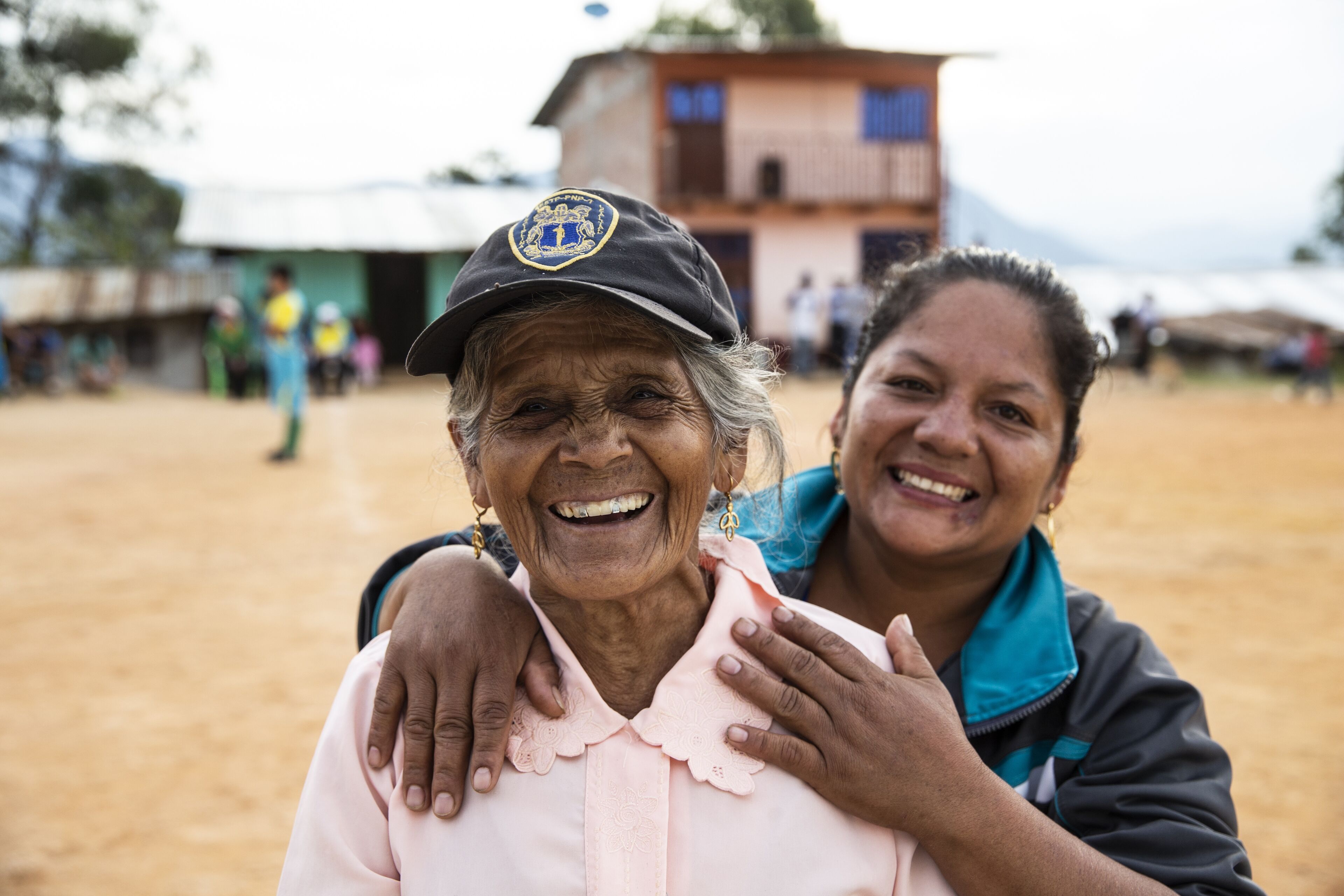
Peru
Blog on the spot
Identity record
Capital city
Lima Area
425,416ha Average farm area
3.5ha Geography
Peru is located in the central and western part of South America (UTM N7970840.422; E552505.422; ZONE 18). It has a continental surface area of 1,285,216.60 km², which represents 0.87% of the planet, distributed as follows: coastal region 136,232.85 km² (10.6%), Andean region 404,842.91 km² (28.4%) and Amazon region 62% (782,880.55 km²). 880.55 km² ); the northern end of the Peruvian territory is at the Putumayo River at 0°02'00" south latitude, the southern end is at the seashore in Tacna (La Concordia point) at 18°21'03" south latitude; the eastern end is at the Heath River in Madre de Dios at 68°39'00" east longitude and the western end is at Caleta Punta Balcones in Pariñas, Talara, Piura at 81°19'35".
The Peruvian Sea or Sea of Grau is the part of the Pacific Ocean that extends along the Peruvian coast for an extension of 3080 km.1 and a width of 200 miles offshore. Its great ichthyological richness is the result of the Humboldt and El Niño sea currents. Its sovereign sea has a maritime area of 991,194.97 km², being a country with a great hydrological potential.
The highest peak in Peru is the Huascaran in the Cordillera Blanca, with an altitude of 6768 masl; the lowest area is the Sechura depression at -34 m.b.a.s.l. the deepest valley is the Cotahuasi Canyon, even surpassing the famous Colorado Canyon; the longest river in Peru is the Ucayali River (tributary of the Amazon River with 1771 km in length; the highest navigable lake in the world is Lake Titicaca in Puno/Peru with 8380 km² and the largest island of the Peruvian coast is the San Lorenzo Island in Callao with 16.48 km². It is the third largest country in South America.
Geologically, Peru is a young country in most of its territory. Forty-two percent of its surface, the Andean system and the coast, arose in the Mesozoic Era, between 130 and 65 million years ago, as a result of tectonic uplifts caused by the subduction of the Nazca plate into the South American plate.
It rises over a territory affected by subduction of the Nazca oceanic plate under the South American continental plate. The intensity of the clash between both masses produced, from the Tertiary Era onwards, the Andes mountain range, a spectacular and practically unique mountain system that structures the country in three very different geographic regions: coast, highlands and jungle.
Harvest period
May - November Number of producers
230000 Number of people living in industry
890000 Bag production per year
4000000
The sector from the country
The sector
In Peru, coffee is produced in 210 rural districts located in 47 provinces of 10 departments. The area cultivated with coffee occupies 230,000 hectares distributed in three zones, being the most appropriate region to obtain the best yields with high quality the one located in the jungle zone, under a tropical ecology. Eighty-five percent of Peruvian producers have properties that fluctuate between 0.5 and 5 hectares. Coffee grows with relative ease from 600 to 1,800 meters above sea level in almost all geographical regions of Peru. However, 75% of the coffee plantations are above 1,000 meters above sea level. The diversity of combinations of climates, soils, precipitation and sunlight constitute a propitious scenario for the cultivation of coffee. Peruvian coffees are of the Coffea arabica type, with different flavor, aroma and acidity profiles. The varieties of coffee cultivated in Peru are Typica (70%), Caturra (20%) and others (10%). 90% of Peruvian coffee is grown under shade, with an average density of 2,000 plants per hectare. In accordance with current trends, some groups of Peruvian farmers have specialized and work in organic and other specialty coffees, recognized for their profile and peculiar characteristics such as cup quality, acidity and balanced flavor that adjusts very well to the microclimates, temperature and strict altitude.
Geography
Peru is located in the central and western part of South America. It has a continental area of 1,285,216.60 km², which represents 0.87% of the planet, distributed in coastal region 136,232.85 km² (10.6%), Andean region 404,842.91 km² (28.4%) and Amazon region 62% (782,880.55 km²).
The Peruvian Sea or Sea of Grau is the part of the Pacific Ocean that extends along the Peruvian coast for an extension of 3080 km1 and a width of 200 miles offshore. Its great ichthyological richness is the result of the Humboldt and El Niño sea currents. Its sovereign sea has a maritime area of 991,194.97 km², being a country with a great hydrological potential.
Peru's highest peak is the Huascarán in the Cordillera Blanca, with an altitude of 6768 masl; the lowest area is the Sechura depression at -34 m.b.s.l. the deepest valley is the Cotahuasi Canyon, surpassing even the famous Colorado Canyon; the longest river in Peru is the Ucayali River (tributary of the Amazon River with 1771 km in length; the highest navigable lake in the world is Lake Titicaca in Puno/Peru with 8380 km² and the largest island of the Peruvian coast is the San Lorenzo Island in Callao with 16.48 km². It is the third largest country in South America.
Main actors
Ministerio de Comercio Exterior y Turismo
Coffees of
Spot price
€/kg
Spot price
€/kg
Spot price
€/kg
Spot price
€/kg
Spot price
€/kg
Spot price
€/kg
Spot price
€/kg
